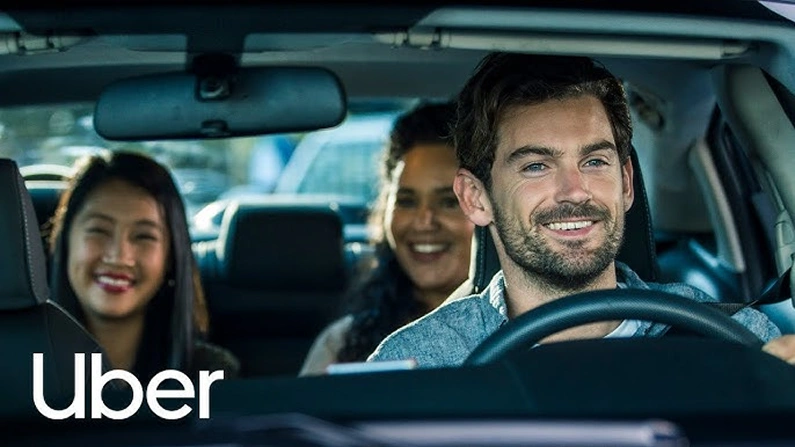So, you’ve hit the road, the app is on, and you’re earning money. Awesome! But when it comes to tax time, you might feel like you’ve just been handed the keys to a brand-new, confusing car. Don’t worry, you’re not alone. This guide will help you understand your tax for rideshare drivers in Australia, breaking down the key concepts from the Australian Taxation Office (ATO) in plain English.
Think of it like a GPS for your finances. We’ll cover everything from your income and expenses to the all-important GST and even what to do when you buy a new car.
Part 1: Your Rideshare Income (The Easy Part)
Your income as a rideshare driver is everything you earn from providing rides to passengers. The ATO calls this “assessable income.” It includes:
- Gross Fares: The total amount passengers pay for their trips.
- Tips and Bonuses: Any extra money you receive from passengers or the platform.
- Cancellation Fees: Income from cancelled trips.
The digital platform you work with (like Uber, or Didi) will provide you with a summary of your earnings. This summary is your go-to record for your income. The ATO also receives this information directly from the platforms, so it’s essential that your records match up. This income is what you’ll declare on your annual income tax return. But before you get to that, you need to think about what you can claim back.
Part 2: Your Expenses & Deductions (The Fun Part)
For every dollar you earn, you probably spent a few cents on your business. The good news is, you can claim these business-related expenses as rideshare tax deductions to reduce your taxable income. The key rule? You can only claim the portion of an expense that relates directly to your rideshare business. If you use your car for both business and personal use, you must split the costs. The ATO calls this “apportionment.”
Here’s a list of common expenses you can claim, as long as they are for business use:
- Platform Fees and Commissions: The fees your rideshare app takes from your fares.
- Tolls and Parking: Tolls and parking fees incurred while on a business trip or between trips.
- Car Cleaning: The cost of washing your car to keep it clean for passengers.
- Passenger Amenities: Small items you provide for passengers, like bottled water, mints, or tissues.
- Mobile Phone and Internet: A portion of your phone bill, based on the percentage of time you use it for the rideshare app, navigation, and other business-related tasks.
Smart Digits can help you get the deduction and maximum eligible refund.
Part 3: Claiming Your Car Expenses: The Logbook vs. Cents per Kilometre Method
Your car is your main business asset, so claiming car expenses as a rideshare driver will likely be your biggest deduction. The ATO gives you two ways to calculate this, and it’s up to you to choose the one that gives you the best outcome.
This is the simplest option. You don’t need to keep receipts for every fuel purchase or service. Instead, you claim a flat rate for every kilometre you drive for your business, up to a maximum of 5,000 kilometres per car per year.
- How it works: You claim a set rate per kilometre (e.g., for the 2024–25 financial year, the rate is 88 cents per kilometre).
- What you need: You just need to keep a simple record of your business kilometres, such as a diary, or a spreadsheet. You must be able to show how you worked out your claim if the ATO asks. You don’t need to track private kilometres or keep receipts for car expenses.
- Who it’s for: This method is best for part-time or casual rideshare drivers who do not drive a lot of business kilometres.
Example: If you drove 3,500 business kilometres for the year, your deduction would be 3,500×0.88=$3,080.
This method is more detailed but can often result in a much larger deduction, especially for full-time drivers with high car expenses. The key to this method is the 12-week logbook rule, a specific guideline from the Australian Taxation Office (ATO) designed to make record-keeping more manageable.
Instead of tracking every single kilometre for the full 52 weeks of the year, the ATO allows you to establish a representative business-use percentage by keeping a detailed logbook for a continuous 12-week period. Think of this as taking a snapshot of your typical driving habits for the year.
How it works:
- You keep a detailed logbook for a continuous 12-week period to determine what percentage of your total driving is for business.
- Once you have this percentage, you can apply it to all your actual car expenses for the entire financial year (the full 52 weeks).
- The best part? This single logbook is valid for up to five years, as long as your driving habits don’t change significantly. This means you don’t have to start over every year unless you buy a new car or your work patterns change.
What you need:
- A 12-week logbook: Record the car’s odometer readings at the start and end of the 12-week period. For every trip, you’ll need to note the date, the purpose (business or private), and the start and end odometer readings.
- All car expense receipts: You must keep receipts for every single business-related car expense for the entire year, including fuel, servicing, repairs, registration, insurance, tyres, and car loan interest.
This method is ideal for full-time rideshare drivers who have high car expenses and drive a high percentage of business kilometres.
Example:
- You keep a 12-week logbook and find that 70% of your total kilometres were for business.
- Your total car expenses for the year (fuel, rego, insurance, etc.) were $15,000.
- Your total deduction would be $15,000 × 0.70 = $10,500.
Part 4: GST - The Game-Changer
This is the most critical difference between rideshare driving and many other small businesses. The ATO considers rideshare services to be “taxi travel” for GST purposes. This means:
You must register for GST from the very first dollar you earn.
Unlike other small businesses that only need to register for GST once their annual turnover hits $75,000, this rule does not apply to rideshare drivers. If you don’t register for GST before you start, the ATO can hit you with penalties and backdated GST payments.
How GST works in Rideshare business-
The full fare your passenger pays includes GST. The GST component is 1/11th of the total fare. You are responsible for collecting this money and passing it on to the ATO.
The good news is, as a GST-registered business, you can also claim GST credits on the purchases you make for your business. This is where the GST on fuel you asked about comes in.
What you can claim GST credits on:
- Fuel: Yes, you can claim the GST on your fuel purchases, as you correctly noted from the ATO website.
- Platform Fees: The GST included in the service fees and commissions charged by the rideshare app.
- Car Expenses: The GST on your registration, insurance, repairs, servicing, and other car-related expenses.
- Other Business Costs: The GST on your phone bill (business portion), passenger amenities, and any other business-related purchases.
How to Report and Pay GST You do this using a Business Activity Statement (BAS). Most rideshare drivers lodge their BAS quarterly.
In simple terms, your BAS calculation looks like this:
GST on your income (1/11th of your gross fares) MINUS GST on your expenses (1/11th of your business-related purchases) EQUALS Your net GST payable to the ATO (or a refund if your expenses were high)
You can lodge your BAS yourself online through the ATO’s myGov or Online services for business portals, or you can use a registered tax agent.
Part 5: Buying a Car & Instant Asset Write-Off
What happens if you buy a new car specifically for ridesharing?
The Instant Asset Write-off is a fantastic tool for small businesses. For the 2024–25 financial year, if you have a turnover of less than $10 million, you can instantly claim a deduction for the business portion of the cost of an asset that costs less than $20,000.
How this applies to you:
- If you buy a car for your business that costs less than $20,000, you can claim the full business-use percentage of that cost in the same year.
- If the car costs more than $20,000, you must depreciate it over its useful life, claiming a portion of its value each year. This is a bit more complex, and a tax agent can help you with the calculations.
Important Note: The instant asset write-off applies to the business portion only. If you bought a car for $15,000 and your logbook shows a 70% business use, you could claim an immediate deduction of 15,000×0.70=$10,500.
Part 6: Essential Record Keeping
This is the foundation of everything we’ve discussed. Good record keeping will make your life so much easier at tax time and will protect you if the ATO ever decides to review your claims.
What to keep:
- Logbook: Whether it’s a physical book or a digital app, keep a detailed record of your business kilometres.
- Receipts: For every expense you plan to claim, keep the receipt. This includes fuel, cleaning, servicing, insurance, phone bills, and passenger amenities.
- Income Summaries: Download and save the monthly and annual tax summaries from your rideshare platform.
- BAS Records: Keep copies of all the BAS you lodge.
A great and free tool for this is the ATO’s myDeductions app, which allows you to track trips and store photos of your receipts right from your phone. You can also partner with Smart Digits to manage these records and ensure you’re fully prepared for tax time.
Final Thoughts
Navigating the world of tax as a rideshare driver is manageable as long as you understand the key rules and, most importantly, keep good records. It can feel like a lot to take in, but remember that for every dollar you spend on your business, you can potentially reduce the amount of tax you pay.
By keeping track of your income and expenses, understanding your GST obligations, and using a logbook to maximise your deductions, you’ll be on the right track. Remember, the information here is a general guide, and it’s always a good idea to speak with a registered tax agent for personalised advice. Happy driving!





